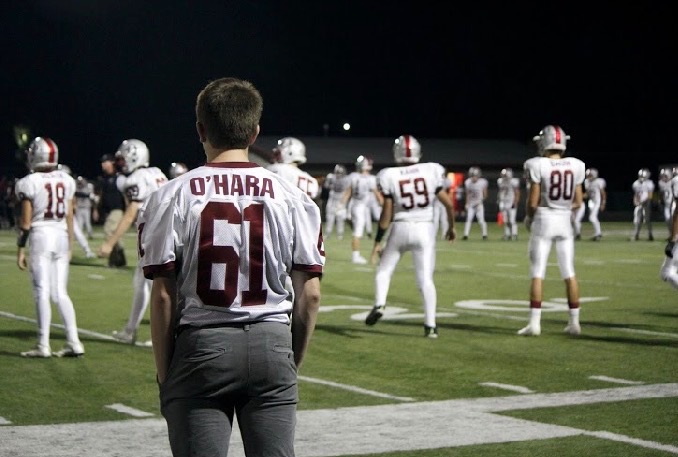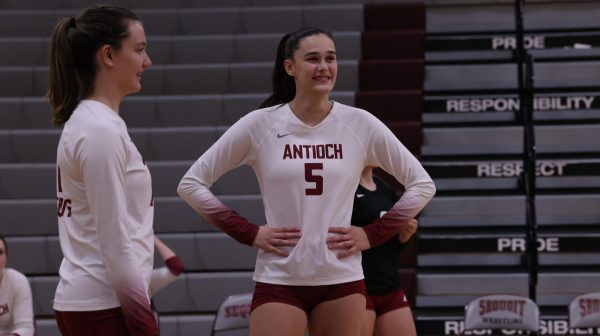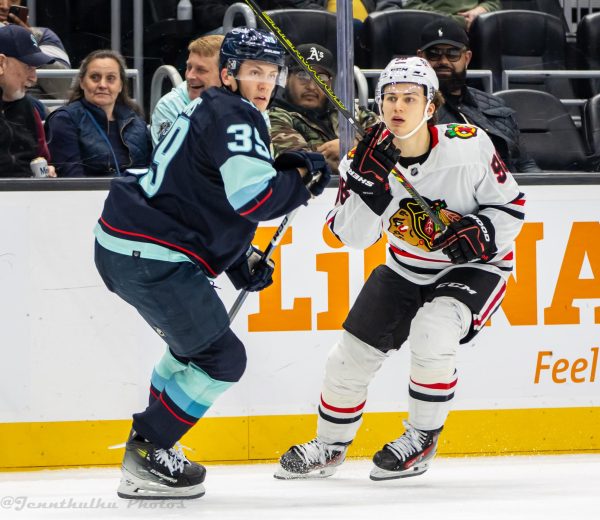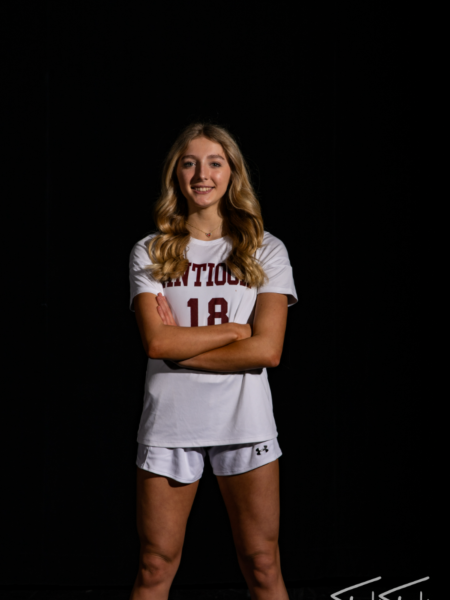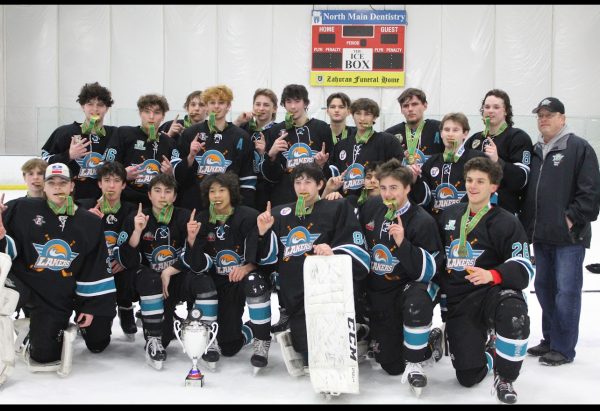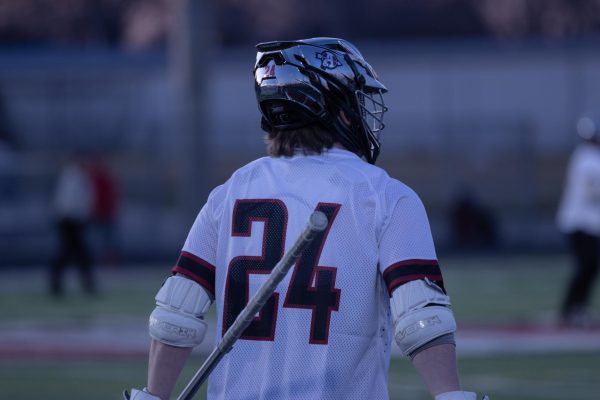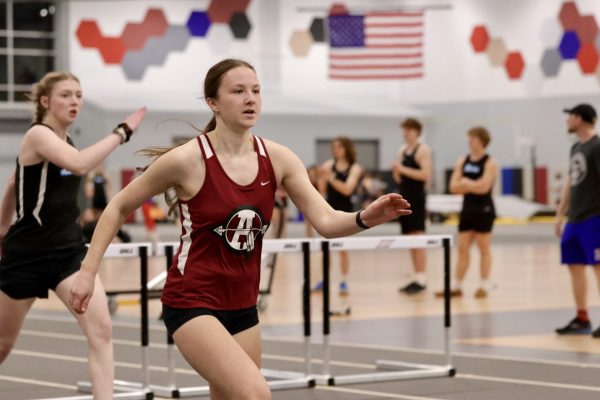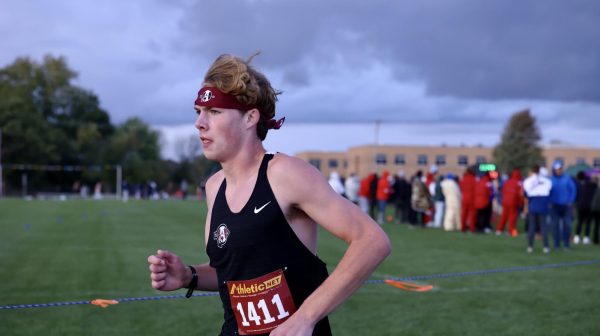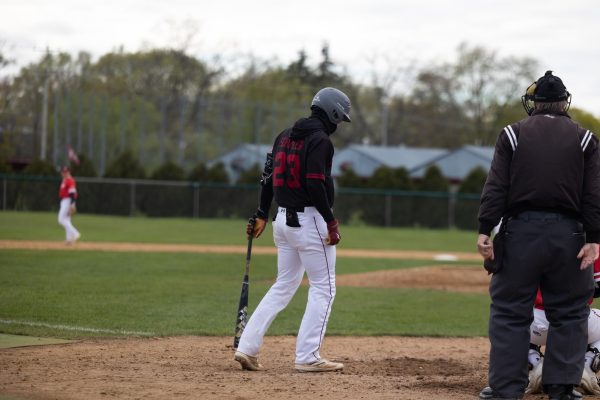Injured, But Not Forgotten
Coming face-to-face with sitting out, possibly for a career, pushes some Sequoits to find other opportunities and reflect on growth.
Sophomore Sean O’Hara watches his teammates stretch before the second half of their football game versus Grant.The Sequoits beat the Bulldogs 42-0, bringing their record to 4-0. “This is probably the hardest thing I have had to do, having to deal with an injury,” O’Hara said.
Injuries are a difficult experience to go through, whether it be long-term or short-term; they are a rough patch in someone’s athletic career. After a certain amount of time being out of a sport due to an injury, the athlete tends to be out of shape by the time they are healed, which means they have to work even harder to get back into their sport. Even so, all of those injured athletes deserve to feel like they still belong on their team.
Sophomore Sean O’Hara, a three-sport athlete, had a serious concussion last spring during an indoor baseball practice.
“I don’t know exactly how it happened, but a baseball flew out of a batting cage last bat and hit me in the back of the head,” O’Hara said.
O’Hara also added that he is still experiencing some symptoms, which has made him unable to play his sophomore year of football.
“This is my sophomore year, this is my first year with the varsity guys and I’m just trying to see what they do, how they practice, how my position works and what I should do on certain plays,” O’Hara said.
O’Hara expressed that many of the guys on the team have been giving him pointers and have been telling him what to do and what not to do in order to get better, despite his inability to play this year.
Unlike O’Hara, some athletes take either a year off of their sport, or are even done playing for the rest of their life after an injury. Senior Cameron Norris has had many injuries that have forced him to stop playing the sport he loves: football. Norris has two torn labrums, one in each shoulder, Osteochondritis in his right knee and finally, he has had about 20 concussions.
“The last concussion was the worst. I don’t have symptoms anymore but it was the worst experience I’ve ever had,” Norris said. “Constant throbbing headaches, throwing up, blurred vision and sometimes blacking out, loud ringing in my ears and overheating.”
Norris claimed that each time he got a concussion, they would get worse. Due to all of these injuries, Norris had to stop his football career before his senior year.
“I think for most of us the love for the game fades throughout the years,” Norris said. “The games are fun but the preparation becomes more of a burden over the years, but all the practices and games are just a small detail in what really matters, which is the teammates. The team truly is a family. That is the thing that hurts most. Knowing that my time got cut short with my second family.”
Sitting out can be extremely hard for athletes. Watching your teammates is a difficult thing to do.
Injuries can take a toll on someone and make them feel like they are helpless. It is up to them to get better and their teammates can help them by being encouraging. Head freshman football coach and physical education teacher Matthew Larsen gave his input on injured athletes and expressed that as a coach they must first assess the injury and see if the trainers need to be called. The trainers will then decide the seriousness of the injury and go from there.
“I tell them the athletes to work their hardest to get back. If they love it, they’re going to try their hardest to get back,” Larsen said.” I make sure that they do the right stuff and that they don’t try to skip past like most athletes do. They try to skip past the levels of the athletic trainers so I try to make sure they get through them.”
Being injured is scary and hard. Athletes often feel like they will lose a connection with their team, but, in the end, it is up to the athlete to involve themselves and be part of the team as much as they can. Teammates are teammates, injuries and all.


